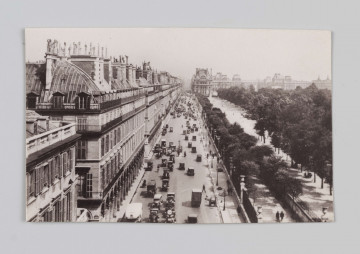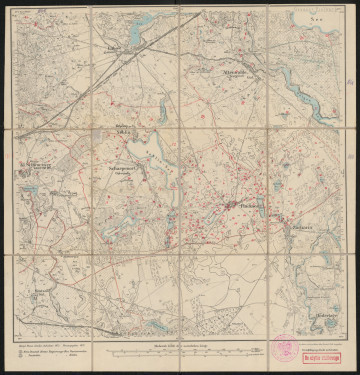
Discrimination band
1939 — 1945
Museum of the history of Polish Jews
The Star of David (Hebrew: Magen David, Shield of David) is a hexagram; the six-pointed star formed of two compound equilateral triangles has been present in Jewish tradition since antiquity. A hexagram is a universal symbol, present in Hellenistic Greek culture, also popular in Middle Eastern cultures. As the Star of David, it is, apart from the menorah (a seven-branched candle holder), the most enduring symbol of Judaism, of Jewish identity, the visual sign of the uninterrupted cultural memory of Jews. The symbol of the Star of David is associated with the quote from the Book of Samuel: "My God, my rock in whom I take refuge, my shield and the horn of my salvation, my stronghold! [...] He is a shield to all who trust him [...] You have also given me the shield of your salvation...", Sm. II 22,3, 31, 36).
The Star of David can be found in medieval manuscripts, on standing stones (matzevah) and in synagogue polychromes as well as on items used during religious ceremonies, such as herb containers (MPOLIN-M139), torah shields (tas) and covers, pointers (yad) (MPOLIN-M128), tallit bags (MPOLIN- M121) or cups (MPOLIN-M138). In the POLIN Museum, there is also an original collection tin used for collecting donations for the construction of the Chachmei Lublin Yeshiva (the Lublin School of Sages) opened in 1936, with symbols referring to the Temple of Jerusalem, including the Star of David (MPOLIN-M518). ).
The motif of the Star of David, like the motif of menorah, also shows the transformation of the Jewish community. At the end of the 19th century, the Star of David had become the most popular emblem of the Zionist movement. It appeared in artworks, publications, propaganda prints, postcards and even on wedding invitations. The Star of David was adopted by, inter alia, sports clubs such as their emblems, e.g., Maccabi (see sports club teacup MPOLIN-M418). ).
During World War II, the Germans forced Jews in the Third Reich and in occupied countries to wear the yellow Star of David on their clothes or, as in the territory of the General Government from 1 December 1939, white armbands with a blue Star of David. The symbol also had to be visible on shops owned by Jews (as we see on the signboard of the fruit shop MPOLIN-M517). This ancient symbol, which had sustained the identity of Jews in the Diaspora for centuries, was to become, in the eyes of the Germans, a sign of humiliation and separation. He foreshadowed the Holocaust. As a symbol of the Holocaust, the Star of David appeared in works of art (in the Museum's collection: e.g., illustrations by Iwona Chmielewska for her book "Blumka's Diary").Renata Piątkowska).
Znaleziono 6 obiektów

National Museum in Lublin

1928 — 1932
National Museum in Szczecin

1915
National Museum in Lublin
DISCOVER this TOPIC
Castle Museum in Łańcut
DISCOVER this PATH
Educational path